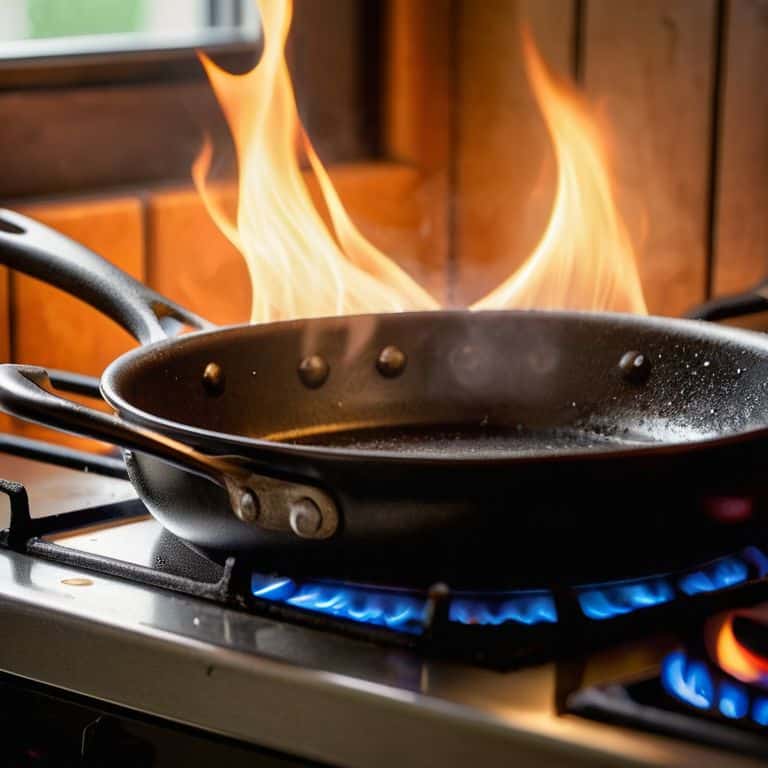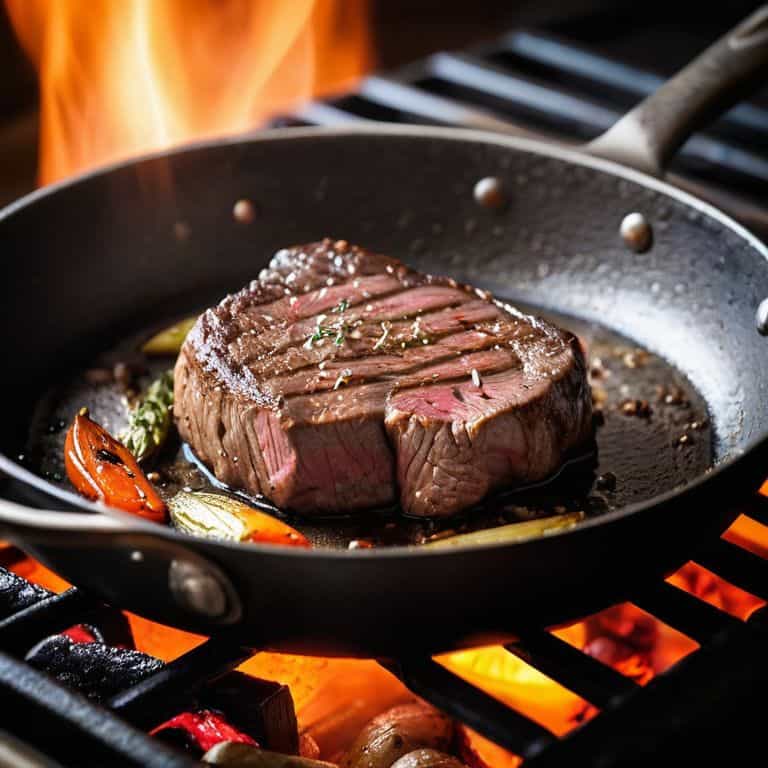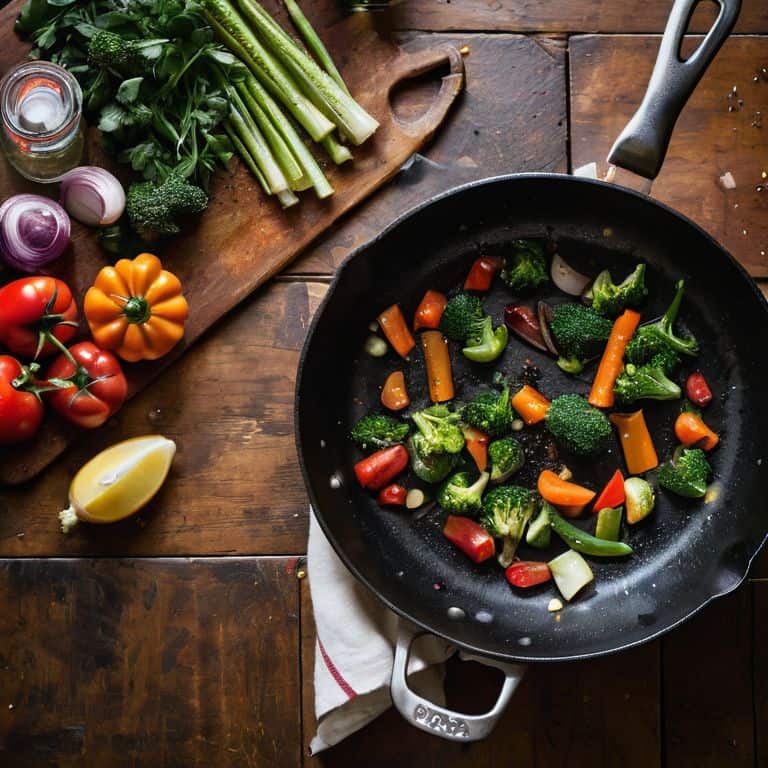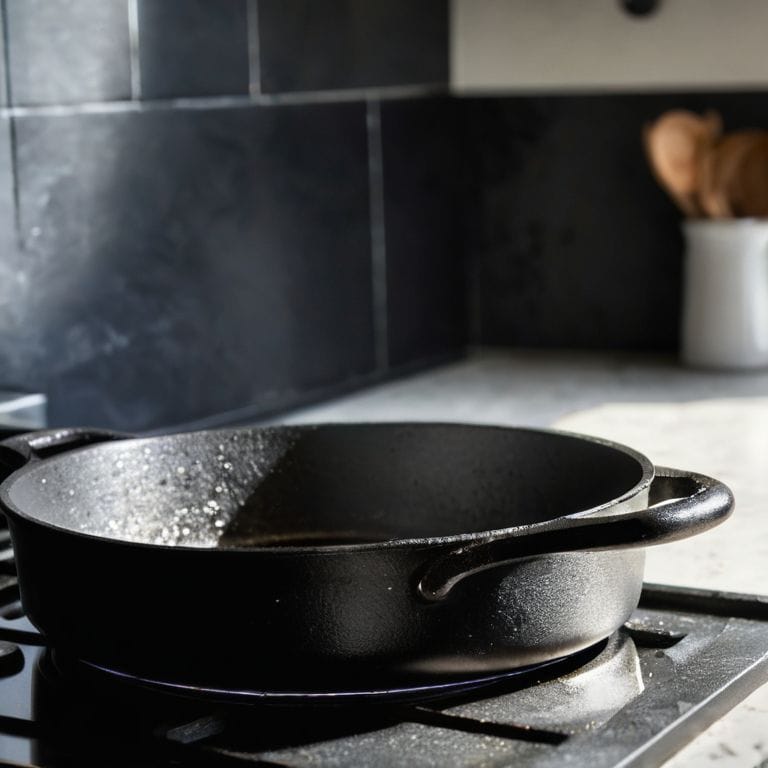I still remember the first time I stumbled upon a carbon steel pan in a quaint little kitchen supply store. The store owner, an avid cook, couldn’t stop raving about its exceptional heat conductivity and durability. As someone who’s always on the lookout for timeless design and functional simplicity, I was intrigued by the idea of a pan that could elevate the cooking experience. But, as I delved deeper into the world of carbon steel pans, I realized that there’s a lot of misinformation and hype surrounding what is a carbon steel pan. It’s not just about the material; it’s about the craftsmanship, the design, and the overall user experience.
As someone who’s passionate about separating the genuinely innovative from the merely trendy, I’m excited to share my honest, hype-free take on carbon steel pans. In this article, I’ll cut through the noise and provide you with a no-nonsense guide to understanding what makes a great carbon steel pan. From the benefits of minimalist design to the importance of proper seasoning, I’ll cover it all. My goal is to empower you with the knowledge to make informed decisions and invest in fewer, better things that will truly elevate your cooking experience. So, if you’re ready to uncover the truth about carbon steel pans and discover what makes them worth the investment, then let’s dive in and explore the world of authentic cooking.
Table of Contents
What Is a Carbon Steel Pan

So, what’s the big deal about carbon steel pans, anyway? Let’s get straight to it – they’re essentially made from a special blend of steel and carbon that’s supposed to change the cooking game. The benefits of carbon steel cookware are numerous, but one of the most significant advantages is its heat conductivity. This means that carbon steel pans can heat up quickly and evenly, allowing for a more precise control over cooking temperatures.
When it comes to choosing between carbon steel pan vs stainless steel, it’s essential to consider the pros and cons of each material. Carbon steel pans are often preferred by professional chefs due to their exceptional heat retention and distribution properties. However, they do require some maintenance to prevent rust and ensure optimal performance. This is where carbon steel pan maintenance tips come in handy, as they can help extend the lifespan of your pan and keep it in top condition.
In terms of cooking techniques, carbon steel pans offer a lot of versatility. They can be used for a wide range of dishes, from seared steaks to delicate sauces. To get the most out of your carbon steel pan, it’s worth exploring different carbon steel pan cooking techniques, such as seasoning and tempering, to achieve the perfect finish. Whether you’re a beginner or an experienced chef, investing in a high-quality carbon steel pan can be a game-changer for your culinary adventures.
Carbon Steel vs Stainless Steel the Verdict
When it comes to cookware, the debate between carbon steel and stainless steel often leaves home cooks and professional chefs alike scratching their heads. In my opinion, the key to making a decision lies in understanding the heat distribution capabilities of each material. Carbon steel pans, with their unique blend of steel and carbon, tend to outperform stainless steel in this regard, allowing for a more even cooking experience.
In the end, the choice between carbon steel and stainless steel comes down to personal preference and cooking style. However, if you’re looking for a material that will provide a searing hot surface for cooking up a perfect steak, carbon steel is the way to go.
Unlocking Benefits of Carbon Steel Cookware
As I delve into the world of carbon steel cookware, I’m excited to unlock its full potential. The benefits of using these pans are numerous, from even heat distribution to a non-stick surface that develops over time. This unique combination makes cooking and cleaning a breeze, allowing home cooks to focus on perfecting their craft.
With regular use, carbon steel pans become a trusted companion in the kitchen, offering a seamless cooking experience. The more I use mine, the more I appreciate the way it responds to different techniques and ingredients, making it an indispensable tool for any culinary enthusiast.
Mastering Carbon Steel Pan Cooking

To truly master carbon steel pan cooking, one must understand the nuances of heat distribution and seasoning. I’ve found that the benefits of carbon steel cookware lie in its ability to retain heat, allowing for a perfect sear on a steak or a crispy crust on a roasted vegetable. When comparing carbon steel pan vs stainless steel, it’s clear that carbon steel takes the cake in terms of heat conductivity.
When it comes to cooking techniques, I’ve discovered that carbon steel pan cooking techniques are all about finesse. A gentle touch and a watchful eye can make all the difference in achieving a perfectly cooked dish. For beginners, I recommend starting with one of the best carbon steel pans for beginners and experimenting with simple recipes to get a feel for the cookware.
As with any cookware, maintenance is key. How to clean carbon steel pans is a common question, and my answer is simple: a gentle scrub and a drying session after each use can keep your pan in top condition. By following these carbon steel pan maintenance tips, you’ll be well on your way to becoming a carbon steel pan master, and you can even consider comparing carbon steel vs cast iron skillets to see which one suits your cooking style better.
Cleaning and Maintenance Tips for Beginners
To keep your carbon steel pan in top condition, it’s essential to develop a simple cleaning routine. After each use, wipe out excess food with a paper towel and avoid using abrasive cleaners or scourers, which can damage the seasoning. For tougher messes, mix equal parts water and white vinegar, and bring the solution to a boil before rinsing with warm water.
Regular maintenance is also crucial to preventing rust and ensuring a non-stick surface. Apply a thin layer of oil to the pan after cleaning and drying, and store it in a dry place to prevent moisture buildup. By following these easy steps, you’ll be able to enjoy your carbon steel pan for years to come.
Essential Carbon Steel Pan Cooking Techniques
To get the most out of your carbon steel pan, it’s crucial to master a few essential techniques. One of the most important is heating control – a carbon steel pan can get scorching hot, but it can also be finicky. I’ve found that a gentle preheating process helps to prevent hotspots and ensures an even cook.
When it comes to cooking with your carbon steel pan, practice makes perfect. Start with simple dishes like seared steaks or pan-fried vegetables, and gradually experiment with more complex recipes. Don’t be afraid to try new things and adjust your techniques as you go – it’s all part of the process of developing your own unique cooking style.
Unpacking the Essentials: 5 Key Facts About Carbon Steel Pans
- Carbon steel pans are made from a unique alloy of steel and carbon, offering exceptional heat conductivity and durability
- They are often compared to cast iron pans but are generally lighter, more responsive, and require less maintenance
- Seasoning is crucial for carbon steel pans, as it creates a non-stick surface and prevents rust – think of it as giving your pan a protective cloak
- Carbon steel pans can be used at high heat, making them ideal for searing meat, cooking stir-fries, and achieving that perfect crust on your dishes
- When shopping for a carbon steel pan, look for thickness, handle ergonomics, and a smooth, even finish – these factors will significantly impact your cooking experience
Key Takeaways: Timeless Charm of Carbon Steel Pans
I’ve found that carbon steel pans offer a unique blend of durability, heat conductivity, and non-stick properties when seasoned properly, making them a worthwhile investment for home cooks and professional chefs alike
Through my exploration of carbon steel vs stainless steel, it’s clear that while both have their advantages, carbon steel pans stand out for their ability to achieve a perfect sear and their overall cooking performance, albeit with more maintenance
Mastering carbon steel pan cooking requires a combination of essential techniques, such as preheating, using the right oil, and not being afraid to get a little creative, as well as a commitment to regular cleaning and maintenance to prevent rust and maintain non-stick properties
The Essence of Carbon Steel
A carbon steel pan is not just a cooking vessel, it’s a catalyst for connection – between the food, the flame, and the person wielding it; where every sizzle and simmer is a testament to the beauty of imperfect, handmade craftsmanship.
Julian Grey
The Verdict: Elevating Your Cookware Game

As I wrap up my exploration of carbon steel pans, I want to emphasize the importance of understanding the benefits and drawbacks of this cookware. From the unlocking benefits of carbon steel, such as its heat conductivity and durability, to the verdict on its comparison with stainless steel, it’s clear that carbon steel pans offer a unique cooking experience. Whether you’re a seasoned chef or a culinary newbie, mastering the techniques and maintenance of carbon steel pans can take your cooking to the next level. By investing in a high-quality carbon steel pan, you’re not just buying a piece of cookware – you’re investing in a timeless cooking experience.
So, what’s the final word on carbon steel pans? For me, it’s about embracing the art of cooking and the joy of creating something truly special. When you combine a beautifully crafted carbon steel pan with a dash of creativity and a pinch of patience, you’ll discover a world of flavors and possibilities that will leave you inspired and eager to get back in the kitchen. As I always say, worth the hype? Absolutely, if you’re willing to put in the time to appreciate the beauty and functionality of these incredible pans.
Frequently Asked Questions
What are the key differences between carbon steel pans and cast iron pans?
For me, the key difference between carbon steel and cast iron pans is all about weight and heat distribution. Cast iron is denser, heavier, and retains heat like a pro, but can be clunky. Carbon steel, on the other hand, is lighter, more agile, and heats up quicker – making it my go-to for speedy stir-fries and sears. Worth the Hype? Absolutely, for different reasons.
How do carbon steel pans perform in terms of heat distribution and retention?
Heat distribution and retention – where carbon steel pans truly shine. They boast exceptional thermal conductivity, searing food evenly and holding heat like a pro. Think of it like a well-designed Dieter Rams product: form meets function, and in this case, that means a perfectly cooked dish every time. Worth the Hype? Absolutely, when it comes to heat performance.
Are carbon steel pans non-stick, and if so, how do they maintain their non-stick properties over time?
So, are carbon steel pans non-stick? Yes, but not in the traditional sense. They develop a non-stick patina over time with proper seasoning and maintenance. Worth the Hype? Absolutely, if you’re willing to put in the work – the payoff is a silky smooth cooking experience that only gets better with age.



